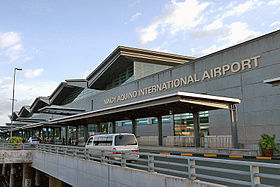Shoe inspection at Naia eased
MANILA, Philippines–The Ninoy Aquino International Airport will be relaxing its policy on shoe inspections beginning Nov. 1.
The Manila International Airport Authority said the shoe inspections at the final security checkpoints in the departure areas of all Naia terminals will no longer be mandatory, “under normal alert conditions.”
“Screeners may only ask passengers to remove their shoes if the alarm of the walk-through metal detector is triggered, or if a passenger is randomly selected for shoe screening every 10 to 20 passengers,” said Miaa general manager Jose Angel Honrado in a statement.
The relaxation of the policy will be subject to several exceptions, however.
Carriers bound for the United States continue to implement shoe inspection at their boarding areas as required by the US Department of Homeland Security, said Honrado.
Article continues after this advertisementShoe inspection will become mandatory whenever the Naia is placed under a “high alert level,” usually imposed when government intelligence receive reports that vital facilities such airports are targets of terrorist attacks, he added.
Article continues after this advertisement“Passengers will surely be delighted by this development as this will further speed up their departure process. This is also our modest contribution to government efforts to improve frontline services in airports and seaports,” Honrado said.
Shoe inspections were imposed in the US and other countries following the failed bombing of a Miami-bound flight in December 2001. The suspected terrorist, Richard Reid, was found to have smuggled explosives inside his shoes.
One of Reid’s co-accused claimed that a Dominican Republic-bound plane that crashed in New York the previous month was also brought down by a shoe bomb, although investigators later ruled this out.
The shoe inspection procedure has become a major inconvenience for air travelers. Because of the attendant delays and long queues, airline companies require passengers to arrive several hours before their flights.
In recent years, however, airports have installed separate screening machines for the feet or modified their detectors to include a passenger’s feet when searching for concealed weapons or explosive devices.
In 2006, the Miaa exempted airline staff from the shoe-removal policy after the pilots of an Australian-bound plane refused to remove their shoes, saying their own airline security had already cleared them.
